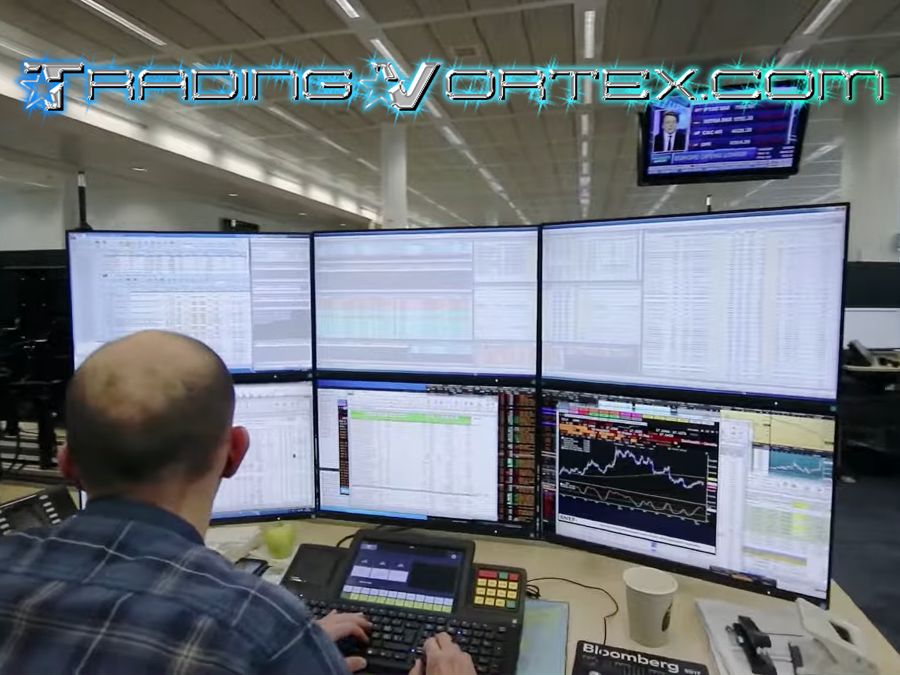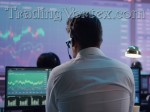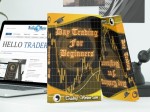Table Of Contents:
- Market Fundamentals and Mechanics:
Market Accessibility and Trading Hours:
Volatility and Risk Management:
Market Liquidity and Execution:
Profit Potential and Returns:
Costs and Fees: A Comparative Analysis.
Navigating the Realm of Skills and Knowledge:
Navigating Regulatory Landscapes: Stock Trading and Forex Trading.
Aligning Personal Preferences and Investment Goals: Stock Trading and Forex Trading.
Triumphs in Trading: Case Studies of Stock Market and Forex Success.
Navigating the Choice: Deciphering Between Stock Market and Forex Trading.
Market Fundamentals and Mechanics:
Financial markets play a pivotal role in the global economy, offering investors opportunities to participate in the growth and fluctuations of various assets. Two prominent markets in this realm are the stock market and the forex market. Understanding their fundamental mechanics is essential for anyone looking to engage in trading or investment.
Understanding the Stock Market:
The stock market serves as a dynamic arena where participants trade ownership stakes in companies, known as stocks or shares. These stocks represent a claim on a company's assets, earnings, and decision-making processes. The value of stocks can vary based on the performance of the company and the prevailing market conditions.
Stocks and Equities: Ownership in Companies.
Companies have the option to raise capital by selling debt or equity. Equity involves the issuance of stocks to investors, providing them ownership in the company. As shareholders, individuals gain the right to partake in profits, vote on significant company matters, and potentially receive dividends.
Market Exchanges and Indices:
Stocks are traded on organized market exchanges like the New York Stock Exchange (NYSE) and Nasdaq. These platforms facilitate the buying and selling of stocks between investors. Additionally, over-the-counter (OTC) markets allow direct trading between parties without intermediaries.
Market indices, such as the S&P 500 and the Nikkei 225, gauge the performance of specific groups of stocks categorized by size, sector, or geography. Investors use indices to measure their returns against market trends and diversify their portfolios.
Factors Influencing Stock Prices:
The pricing of stocks is a result of supply and demand dynamics in the market. Numerous factors influence these dynamics, including:
- Earnings: A company's earnings significantly impact its stock price. Positive earnings reports and optimistic future outlooks can lead to price appreciation, while negative reports may result in declines.
- News: News related to a company's operations, industry, or reputation can influence stock prices. Positive news, such as mergers, product launches, or regulatory approvals, can boost prices, while negative news can lead to declines.
- Sentiment: Investor sentiment, driven by overall market mood and attitude, affects stock prices. Optimism can drive demand and prices up, while pessimism can lead to selling pressure and price drops.
Unveiling the Forex Market:
The forex market operates as a global marketplace for trading currencies. Currencies are integral for international trade and investment, enabling the exchange of goods and services across borders. Forex trading also offers opportunities for traders to speculate on currency value movements.
Exploring Currency Pairs:
Currencies are traded in pairs, with one currency exchanged for another. For instance, the EUR/USD pair represents the exchange rate between the Euro and the US Dollar. The first currency (base) is traded against the second currency (quote), and the exchange rate indicates the quote currency required to purchase one unit of the base currency.
Role of Central Banks and Economic Indicators:
Central banks manage a country's monetary policy and currency supply. They influence currency values by adjusting interest rates, intervening in foreign exchange markets, and controlling money supply. Economic indicators, reflecting economic health, also impact currency values. Positive indicators, like GDP growth and low unemployment, can strengthen a currency's value.
Price Determinants in Forex:
Supply and demand dynamics determine currency pair prices in the forex market. Several factors shape these dynamics:
- Interest Rates: Higher interest rates attract investors seeking better returns, increasing demand and currency value. Lower rates reduce demand and value.
- Trade Balance: Trade surpluses enhance currency value, while trade deficits weaken it due to money flow implications.
- Speculation: Market sentiment and momentum from speculation can affect currency values. Expectations of future appreciation lead to buying, raising prices; expectations of depreciation lead to selling, reducing prices.
Market Accessibility and Trading Hours:
Access to financial markets and the availability of trading hours play crucial roles in shaping the investment landscape for both the stock market and the forex market. Understanding how these factors operate is essential for traders and investors seeking to capitalize on market opportunities.
Stock Market Accessibility:
The stock market serves as a dynamic hub for investors to buy and sell ownership shares in publicly traded companies. Comprising various exchanges like the New York Stock Exchange (NYSE) and Nasdaq, the stock market provides a platform for stock trading.
Traditional Exchanges and Online Trading:
Traditionally, stock exchanges were physical spaces where traders engaged in face-to-face negotiations. However, the digital age has revolutionized stock trading, with the majority of transactions now executed electronically through online platforms. This shift has democratized access to the stock market, enabling investors from around the world to engage in trading via brokerage accounts and an internet connection.
Trading Hours and Limitations:
Stock exchanges operate within specific trading hours, which vary based on geographical location and time zone.
These hours impact market liquidity and volatility, with liquidity referring to the ease of buying and selling stocks and volatility indicating price fluctuations. Understanding these trading hours is essential for optimizing trading strategies and assessing market conditions.
Forex Market Accessibility:
The forex market, the global arena for currency exchange, underpins international trade and investment while offering trading opportunities based on currency value movements.
24-Hour Trading: A Global Phenomenon.
In stark contrast to the stock market, the forex market operates 24 hours a day, five days a week. This constant availability is attributed to the decentralized nature of the market, spanning a network of banks, brokers, and dealers across various time zones. The forex market's four primary trading sessions: "Sydney, Tokyo, London, and New York" follow the sun's trajectory, influencing trading patterns and market dynamics.
Flexibility for Different Time Zones:
The forex market's continuous trading cycle accommodates traders across diverse time zones, granting them flexibility to engage at their convenience. Traders can align their trading activities with specific sessions that align with their strategies, preferences, or daily routines.
Understanding the accessibility and trading hours of both the stock market and the forex market empowers investors to strategize effectively, consider market dynamics, and make informed decisions. Whether engaging in stock trading through online platforms or navigating the round-the-clock nature of forex trading, comprehending these elements is fundamental to successful participation in financial markets.
Volatility and Risk Management:
Volatility, a cornerstone of financial markets, defines the extent of price fluctuations over time and is integral to both stock trading and forex trading. Managing volatility and associated risks is crucial for investors and traders seeking to navigate the complexities of these dynamic markets.
Volatility in Stock Trading:
Understanding Stock Volatility:
In stock trading, volatility gauges the amplitude of price oscillations, reflecting the inherent uncertainty and risk associated with investing. High volatility indicates rapid price changes, while low volatility signifies stability.
Factors Influencing Stock Volatility:
Numerous factors contribute to stock volatility and are the same as the Factors Influencing Stock Prices:
- Earnings: The cornerstone of stock valuation, a company's earnings profoundly affect both its stock price and volatility. Favorable earnings reports or positive outlooks can trigger price surges, while disappointing figures or pessimistic projections can lead to declines.
- News: News impacting a company's operations, reputation, or industry can sway stock prices. Events such as product launches, mergers, lawsuits, regulatory changes, and natural disasters exert influence by altering perceptions of a company's value.
- Sentiment: Investor sentiment, optimism or pessimism, casts a substantial impact on stock prices and associated volatility. Positive sentiment drives demand and upward price momentum, while negative sentiment encourages selling and price declines.
Strategies to Manage Stock Volatility:
Managing stock volatility involves employing effective strategies:
- Diversification: Spreading investments across diverse stocks, sectors, or asset classes mitigates risks associated with individual stocks or market segments. Diversification smoothens portfolio returns and curtails overall volatility.
- Hedging: Employing derivatives like options or futures, traders can safeguard portfolios from adverse price movements. By counteracting losses through derivatives inversely correlated to underlying stocks, investors curtail potential declines and manage volatility.
- Timing: Utilizing technical or fundamental analysis, investors can time their trades in response to anticipated price movements. Effective timing strategies can amplify portfolio returns by capitalizing on volatility-induced opportunities.
Volatility in Forex Trading:
Understanding Forex Volatility:
Forex trading, centered on currency exchange, thrives on volatility, a measure of price fluctuations defining the inherent risk and uncertainty associated with the market. High volatility signifies substantial currency pair price changes, while low volatility indicates stability.
Sources of Currency Volatility:
Several sources contribute to currency volatility and are basically the same as the price determinants in Forex:
- Interest Rates: Interest rates, indicating borrowing or lending costs, hold sway over currency values by influencing returns and risks. Elevated interest rates allure investors seeking higher returns, fostering demand and currency value appreciation.
- Trade Balance: The trade balance, measuring export-import discrepancies, steers currency values by regulating money flow across borders. A trade surplus enhances currency value, while a deficit weakens it.
- Speculation: Currency speculation, driven by price expectations, steers market sentiment and momentum. Positive expectations spur buying and price elevation, while negative projections encourage selling and price depreciation.
Risk Mitigation Techniques:
Effective risk mitigation strategies are pivotal in forex trading:
- Stop-Loss Orders: These orders mandate automatic position closure upon reaching pre-set price levels. Employing stop-loss orders shields traders from adverse market moves, limiting losses and volatility exposure.
- Position Sizing: Tailoring position sizes based on risk-reward ratios, trading strategies, and market conditions optimizes risk management. Position sizing aligns with risk tolerance and controls volatility risk.
- Currency Correlation: Grasping currency correlation (how currency pairs interact) empowers traders to diversify portfolios, hedge positions, or exploit arbitrage. Currency correlation enhances profitability and curtails volatility exposure.
Navigating Volatility and Risk:
Understanding and managing volatility and risk are paramount for successful trading and investment in both the stock and forex markets. Implementing appropriate strategies, aligned with individual risk tolerance and trading goals, empowers market participants to capitalize on opportunities while effectively mitigating potential downsides.
Market Liquidity and Execution:
The liquidity and execution dynamics in both the stock market and the forex market significantly influence the trading experience and outcomes for market participants. Understanding these aspects is essential for making informed decisions and optimizing trading strategies.
Liquidity in Stocks:
Understanding Market Liquidity:
Market liquidity in stocks pertains to the ease of buying or selling shares without substantially impacting their prices. This concept is shaped by various elements, including bid-ask spreads, trading volume, and order execution.
Bid-Ask Spreads:
The bid-ask spread represents the disparity between the highest price buyers are willing to pay (the bid) and the lowest price sellers are willing to accept (the ask). This spread embodies supply-demand dynamics and trading costs.
- A narrow spread signifies robust liquidity, indicating multiple buyers and sellers trading at comparable prices.
- Conversely, a wide spread reflects limited liquidity, suggesting fewer traders willing to engage at disparate prices.
Trading Volume's Role:
Trading volume denotes the quantity of shares exchanged within a specific time frame, reflecting market participant activity and interest.
- High trading volume implies liquidity, with more transactions stabilizing prices.
- Conversely, low trading volume signals diminished liquidity, potentially resulting in price volatility due to fewer transactions.
Navigating Order Execution:
Order execution encompasses completing trades within the market and is influenced by factors such as order type, size, timing, and stock liquidity.
- Market Orders: These orders entail immediate execution at the best available price. While fast, market orders in illiquid stocks could trigger significant price impact.
- Limit Orders: These orders are fulfilled when the market price hits or surpasses a specified limit. While potentially offering better prices, limit orders might not execute in illiquid markets.
Liquidity in Forex:
Exploring Forex Liquidity:
Forex liquidity pertains to the ease of buying or selling currencies without substantially affecting exchange rates. Key determinants include market liquidity depth, execution speed, and slippage.
Depth of Market Liquidity:
The forex market stands as one of the world's most liquid markets, boasting an average daily trading volume surpassing $6 trillion. Its constant operation, 24 hours a day, five days a week, encompasses a global network of banks, brokers, dealers, and traders. High liquidity is a hallmark of the forex market, driven by the sheer multitude of buyers and sellers in diverse time zones. Additionally, tight bid-ask spreads contribute to low transaction costs.
Execution Swiftness and Slippage:
Execution in forex involves finalizing trades within the currency market, influenced by order type, size, timing, and currency pair liquidity.
- Market Orders: These orders trigger swift execution at the best available price. However, due to market fluctuations, executing at precise levels may lead to slippage, a discrepancy between anticipated and actual prices.
- Limit Orders: Execution occurs when market prices meet or exceed a predefined limit. While offering potential price advantages, limit orders may remain unfulfilled if currency pairs are illiquid.
Navigating Liquidity and Execution:
Understanding market liquidity and executing trades effectively form the cornerstone of successful trading in both stocks and forex. By aligning strategies with the liquidity characteristics of each market, traders can optimize their trading experience, minimize adverse price impact, and enhance their overall profitability.
Profit Potential and Returns:
Both stock trading and forex trading offer distinct avenues for generating profits, with each market presenting unique mechanisms and considerations for realizing gains. Understanding the profit potential and returns associated with these trading endeavors is essential for informed decision-making and effective investment strategies.
Profit Generation in Stock Trading:
Dividends and Capital Appreciation:
In stock trading, profits can stem from two primary sources: dividends and capital appreciation.
- Dividends, periodic payments distributed by some companies to shareholders, serve as a means of sharing profits. They can provide a consistent income stream, though they're not universally guaranteed and may be subject to cuts in times of financial strain.
- On the other hand, capital appreciation entails the increase in a stock's value over time, resulting in potential gains when selling at a higher price than the purchase cost. However, capital appreciation is not assured, as stock prices can also decline due to market dynamics.
Long-Term vs. Short-Term Strategies:
Investment strategies in stock trading encompass two principal approaches: long-term and short-term investment.
- Long-Term Investment: Holding stocks over years or decades, long-term investors capitalize on the anticipated growth of a company. This approach delves into fundamental factors like earnings, growth potential, and competitive advantage. Long-term investing can harness the benefits of compound interest, lower taxes, and reduced transaction costs.
- Short-Term Investment: Characterized by rapid buying and selling within shorter time frames, short-term investors seek to profit from market volatility. Technical analysis, trends, and news guide their decision-making. This strategy can lead to rapid returns, but it also entails heightened risks, volatility, and transaction costs.
Profit Potential in Forex Trading:
Leveraging Price Movements:
Forex trading revolves around capitalizing on currency exchange rate differentials, presenting distinctive profit mechanisms.
Harnessing Leverage:
Forex trading stands out for its leverage feature, which permits traders to control larger currency volumes with a relatively modest capital investment. This amplifies potential returns but also heightens the impact of losses. Leverage accentuates the significance of price movements, enabling traders to profit from even minor fluctuations.
Scalping, Day Trading, and Swing Trading:
Forex trading accommodates diverse styles, each targeting distinct price movement scenarios.
- Scalping: Characterized by swift, short-term trades lasting seconds to minutes, scalping leverages high leverage ratios and sizable trade volumes to exploit minor price shifts. Success hinges on quick execution, low spreads, and vigilant market monitoring.
- Day Trading: Within a single day, day traders seek sizable price movements. Relying on technical analysis, indicators, and news, they capture opportunities arising from daily fluctuations. Discipline, risk management, and a well-defined plan are crucial.
- Swing Trading: Extending over several days or weeks, swing traders leverage trend analysis, chart patterns, and market sentiment to capture medium-term price movements. Patience, adaptability, and comprehensive market insight define this strategy.
Navigating Profit Opportunities:
Both stock and forex trading offer distinctive profit avenues, each catering to diverse risk appetites, investment horizons, and market perceptions. Strategically aligning trading approaches with individual preferences empowers traders and investors to navigate these markets and seize opportunities for profitable outcomes.
Costs and Fees: A Comparative Analysis.
In both stock trading and forex trading, costs and fees play a pivotal role in shaping the profitability and returns of traders. Understanding the intricate nature of these expenses empowers investors to make well-informed decisions tailored to their trading preferences and financial goals.
Navigating Stock Trading Costs:
Brokerage Fees and Commissions:
Stock trading involves an array of costs and fees that can impact a trader's bottom line. Central among these are brokerage fees and commissions imposed by brokerages.
- Trading Commissions: These fees, incurred per buy or sell order, can be fixed or variable based on trade size or value. Brokers may charge, for instance, a fixed amount per trade or a percentage of the trade value.
- Account Maintenance Fees: Brokers may levy fees for maintaining accounts, ranging from monthly to annual, often dependent on the account balance.
- Research and Data Fees: Access to research, analysis, news, and tools is sometimes subject to additional charges. Premium services may come at a monthly cost or be waived for active traders.
Tax Implications:
Taxation further affects stock trading profitability. Factors include capital gains tax and dividend tax.
- Long-Term and Short-Term Capital Gains: Profits from selling stocks held for more than a year are often taxed at preferential rates, while those from shorter holding periods are usually taxed as ordinary income.
- Dividend Tax: Taxes on dividends vary, with qualified dividends often subject to lower rates and non-qualified dividends taxed as ordinary income.
Untangling Forex Trading Costs:
Spread, Swap, and Commission Structures:
Forex trading entails distinct costs, primarily the spread, swap, and commission structures.
- Spread: The difference between bid and ask prices, the spread reflects liquidity, volatility, and trading costs. Narrow spreads indicate higher liquidity and lower volatility.
- Swap: Interest rate differentials between currency pairs result in swap charges for overnight positions. Positive or negative swap depends on trading direction and currency interest rates.
- Commission: Brokerages may impose fixed or variable commission charges for facilitating trades.
Tax Implications:
Tax considerations underscore the complexity of forex trading costs.
- Spot Forex Trading: Tax treatment varies by country and holding period. Spot forex trading may be taxed as ordinary income or capital gains.
- Forex Futures and Options Trading: Taxation depends on the specific country and contract type, with forex futures and options trading often subject to distinct tax regulations.
Weighing the Financial Landscape:
Understanding and evaluating costs and fees is indispensable for traders seeking optimal profitability. In stock trading, brokerage fees, maintenance costs, and taxes influence returns. In forex trading, spreads, swaps, commissions, and tax implications shape profitability. Crafting a comprehensive trading strategy demands a comprehensive grasp of these financial elements, enabling traders to make informed decisions aligned with their objectives and risk appetite.
Navigating the Realm of Skills and Knowledge:
Success in both stock trading and forex trading hinges on a robust skill set and deep-seated knowledge. Mastering these competencies is pivotal for navigating the intricate landscapes of these dynamic markets.
Acquiring Aptitudes for Stock Trading:
Fundamental and Technical Analysis:
Stock trading thrives on fundamental and technical analysis, necessitating an array of skills.
- Fundamental Analysis: Grasping concepts from accounting, finance, economics, and business strategy empowers traders to evaluate a company's intrinsic value. This skill assists in identifying stocks that are undervalued or overvalued, and in assessing long-term prospects.
- Technical Analysis: Proficiency in mathematics, statistics, computer programming, and psychology empowers traders to analyze price movements, patterns, and historical data. Technical analysis assists in predicting stock trends and determining optimal entry and exit points.
Company Research and Sector Insights:
Skillful company research and sector insights are vital for informed decision-making.
- Company Research: Data collection, analysis, report writing, and presentation proficiency enable traders to understand a company's strengths, weaknesses, opportunities, and threats. This skill aids in anticipating stock behavior.
- Sector Insights: Proficiency in market research, industry analysis, benchmarking, and forecasting equips traders to contextualize a company within its industry, identifying high-performing sectors and emerging trends.
Thriving in the Landscape of Forex Skills:
Economic Awareness and Geopolitical Factors:
Flourishing in forex necessitates a nuanced grasp of economic and geopolitical factors.
- Economic Awareness: Adeptness in economics, finance, accounting, and statistics is crucial for comprehending macroeconomic influences on currency supply and demand. This skill aids in forecasting how currencies will perform relative to each other.
- Geopolitical Factors: Competency in political science, history, geography, sociology, and international relations allows traders to assess the impact of political and social events on currency stability and security.
Technical Chart Analysis and News Interpretation:
Forex proficiency hinges on the ability to analyze technical charts and interpret news.
- Technical Chart Analysis: Proficiency in mathematics, statistics, computer programming, and psychology is vital for deciphering price patterns and trends, enabling traders to make informed predictions and strategic trading decisions.
- News Interpretation: Reading comprehension, critical thinking, logical reasoning, communication, and decision-making skills empower traders to swiftly respond to news events that trigger market volatility.
Mastering the Tapestry of Trading Skills:
Both stock and forex trading require multifaceted skills and in-depth knowledge. Crafting a winning strategy in these markets demands a synthesis of competencies, enabling traders to make well-informed decisions, adapt to changing conditions, and seize opportunities while minimizing risks. From economic insights to technical analysis and from fundamental evaluation to news interpretation, the acquisition of these skills is an ongoing journey of growth and refinement.
Navigating Regulatory Landscapes: Stock Trading and Forex Trading.
Both stock trading and forex trading operate within regulatory frameworks designed to ensure market integrity, safeguard investor interests, and prevent fraudulent activities. These regulations, though distinct in nature, play a pivotal role in shaping the trading environments of these two financial arenas.
Evolving in the Realm of Stock Trading Regulations:
SEC Oversight and Investor Protection:
The U.S. stock market operates under the vigilant eye of the Securities and Exchange Commission (SEC), established in response to the 1929 stock market crash. The SEC shoulders the responsibility of preserving fair, efficient markets while fostering capital formation. Its jurisdiction extends to diverse market participants, including securities issuers, brokers, investment advisers, and mutual funds.
SEC enforces securities laws like the Securities Act of 1933, Securities Exchange Act of 1934, Sarbanes-Oxley Act of 2002, and more. The agency's Office of Investor Education and Advocacy empowers investors through information dissemination. Additionally, the SEC's whistleblower program rewards those who report violations.
Insider Trading and Market Manipulation:
The SEC stands as a bulwark against insider trading and market manipulation, ensuring market integrity and fairness. Insider trading, which capitalizes on nonpublic information for an unfair advantage, and market manipulation, which distorts prices for misleading gains, are both unequivocally prohibited. These practices are subject to rigorous investigation by the SEC's Division of Enforcement.
Navigating the Regulatory Landscape of Forex Trading:
National Regulatory Agencies:
Unlike the centralized authority of the SEC, forex trading finds its regulatory oversight dispersed among various national regulatory agencies globally. These agencies are entrusted with responsibilities that span from licensing and monitoring brokers to enforcing trading standards and safeguarding participants' interests.
- In the U.S., the Commodity Futures Trading Commission (CFTC) and the National Futures Association (NFA) take charge.
- The Financial Conduct Authority (FCA) governs the United Kingdom.
- The Australian Securities and Investments Commission (ASIC) oversees Australia's forex market.
- Switzerland's forex market falls under the purview of the Swiss Financial Market Supervisory Authority (FINMA).
- The Japan Financial Services Agency (JFSA) regulates forex trading in Japan.
International Cooperation and Regulatory Challenges:
International collaboration seeks to harmonize forex trading regulations across borders. Initiatives like the Basel Committee on Banking Supervision (BCBS), International Organization of Securities Commissions (IOSCO), Financial Stability Board (FSB), and Bank for International Settlements (BIS) drive standards and best practices for forex trading.
Yet, challenges persist. The absence of a uniform global regulatory framework poses inconsistencies and gaps. The rise of innovative technologies, such as cryptocurrencies and blockchain, presents fresh regulatory hurdles. Moreover, the intricate web of market participants, products, and activities complicates monitoring and enforcement.
A Balancing Act of Regulation and Innovation:
Regulatory oversight in both stock and forex trading aims to ensure stability, fairness, and investor protection. While the SEC's all-encompassing authority safeguards the U.S. stock market, forex trading's decentralized landscape places the onus on national regulatory agencies to maintain the integrity of their markets. Amid the challenges of evolving technologies and intricate market dynamics, these regulatory frameworks remain essential in maintaining a delicate equilibrium between financial innovation and market security.
Aligning Personal Preferences and Investment Goals: Stock Trading and Forex Trading.
Each trading avenue, whether stocks or forex, holds a distinct allure, driven by individual inclinations and investment aspirations. By delving into the world of personal preferences and investment goals, traders can unearth the path that resonates with their financial ambitions.
Crafting Stock Market Strategies: Reflecting Personal Preferences.
Risk Tolerance and Investment Horizon:
In stock trading, risk tolerance stands at the forefront of strategic considerations. As stock prices sway in response to multifaceted influences, traders need to assess their threshold for volatility. Balancing the lure of potential returns with the risk of losses is paramount. This introspective evaluation, influenced by factors like personality, financial circumstances, and objectives, guides traders in determining their capital allocation and trade sizing.
Investment horizon in stock trading spans a gamut of timeframes, each catering to diverse strategies. Investors in stocks often adopt longer investment horizons, capitalizing on the historical trend of stocks appreciating over time. This measured approach aligns with stock market dynamics and the evolution of companies, thereby allowing traders to tailor their strategies to match their time preferences.
Diversification and Portfolio Construction:
Diversification is a cornerstone of stock trading, heralded for its risk-mitigating effects. Carefully selecting stocks from various sectors and industries forms a shield against concentrated risks. A well-diversified portfolio reflects a trader's recognition of the necessity to spread investments, fostering resilience in the face of market fluctuations.
Building a portfolio requires a structured approach. Establishing goals, crafting asset allocations, conducting in-depth research, and periodic rebalancing guide the construction process. This meticulous strategy underpins a trader's ability to navigate market volatility and aligns with their long-term objectives.
Sculpting Forex Endeavors: Shaping Investment Aspirations.
Risk-Return Equation and Embracing Speculation:
Forex trading unfurls against the backdrop of the risk-return balance, a nuanced interplay between potential profits and losses. This balance is shaped by trading strategies, leverage utilization, position sizes, and risk management techniques. Forex's allure lies in its potential for substantial returns, amplified by leverage and the capability to capitalize on both upward and downward price movements.
However, this allure is accompanied by heightened risk, stemming from the swift and unpredictable nature of forex markets. Acknowledging this risk-return dynamic, traders can employ risk mitigation measures like setting attainable goals, adopting suitable leverage ratios, sizing positions judiciously, and placing stop-loss and take-profit orders.
Speculation permeates forex trading, rooted in the intricate confluence of diverse factors. This speculative terrain requires adaptability and flexibility. Mastery in this arena involves fusing fundamental and technical analysis, employing multi-faceted trading perspectives, and navigating through a myriad of currency pairs. Forex traders exhibit a dexterity to seize opportunities while confronting evolving market conditions.
Short-Term vs. Long-Term Vision:
Forex's tempo is often swift, encouraging a short-term perspective. This outlook thrives on immediacy, leveraging indicators, technical analysis, and swift execution. The dynamic nature of forex markets renders strategies like scalping, day trading, and swing trading more relevant. This approach caters to traders who thrive on the thrill of rapid fluctuations and the opportunity to profit from timely market shifts.
Conversely, stock trading nurtures a more patient approach, framed by the historic growth trajectory of companies. Long-term investors gravitate towards strategies such as buy-and-hold, value investing, and dividend investing. These strategies draw strength from fundamental and sector analysis, embracing the gradual appreciation of stocks.
A Tailored Journey: A Confluence of Preferences and Goals.
In the ever-evolving universe of trading, personal preferences and investment goals hold the compass that guides traders through the maze of choices. Whether entranced by stocks or forex, traders who harmonize their individual dispositions with tailored strategies stand poised to harness the potential of each market. This intersection weaves a narrative of calculated risk, informed decisions, and a proactive pursuit of financial objectives.
Triumphs in Trading: Case Studies of Stock Market and Forex Success.
The realms of the stock market and the forex market have been witness to extraordinary success stories, where skilled investors and traders have transformed opportunities into monumental financial achievements. These luminaries exemplify the potential rewards that these markets can offer to those who navigate them with astute strategies and unwavering determination.
Stock Market Titans: A Legacy of Profound Success.
Warren Buffett: The Sage of Omaha.
The name Warren Buffett resonates as a beacon of stock market mastery. Through his principled value investing approach, he has amassed a colossal fortune and remains a symbol of financial sagacity. From an early age, Buffett displayed an affinity for stocks, investing his earnings into small businesses. His journey culminated in the establishment of Berkshire Hathaway, a conglomerate whose investments span iconic brands like Coca-Cola and Apple. Anchored in his philosophy of acquiring undervalued companies and holding them for the long term, Buffett's net worth soared beyond $100 billion, securing his place as a true luminary in the world of investing.
Peter Lynch: The Architect of Astounding Returns.
Peter Lynch's legacy lies in his remarkable stewardship of the Fidelity Magellan Fund. Under his tenure, the fund achieved an average annual return that outshone the S&P 500 index, underscoring his uncanny ability to pick winning stocks. Lynch's investment maxim, "invest in what you know," emphasized the importance of researching companies within one's purview, resulting in his tenure witnessing several multi-bagger investments. His trailblazing strategies were encapsulated in his books "One Up on Wall Street" and "Beating the Street", cementing his position as an investment luminary.
Cathie Wood: A Vanguard of Innovation.
Cathie Wood, a visionary investor, heralds the era of innovative investment strategies. Founding ARK Investment Management, Wood steered her funds towards transformative technologies, propelling her into the limelight. Her ETFs, backed by bold bets on groundbreaking companies, span biotechnology, artificial intelligence, and space exploration. Her foresight manifested in the prescient investment in Tesla, which soared to unprecedented heights. Hailed for her iconoclastic approach, Cathie Wood's influence reverberates across industries reshaped by her convictions.
Forex Trailblazers: A Chronicle of Astounding Returns.
George Soros: The Architect of the "Black Wednesday".
George Soros stands as a testament to the enormous potential within the forex market. His audacious bet against the British pound during the "Black Wednesday" in 1992 culminated in the pound's devaluation and his legendary earnings of over $1 billion in a single day. Soros' insights were fueled by his macroeconomic and geopolitical analysis, aligning his interests with profound global shifts. His legacy extends beyond financial success, as he championed democratic values and human rights.
Stanley Druckenmiller: A Prodigy of Profits.
Stanley Druckenmiller, a protégé of George Soros, forged his own legacy through remarkable forex trading achievements. Instrumental in Soros' assault on the British pound, Druckenmiller's prowess in predicting currency movements is legendary. His masterful bet against the German mark during the European currency crisis further bolstered his reputation as a savant in forex trading. His illustrious career boasts an average annual return of 30% over three decades.
Bill Lipschutz: The Grandeur of Gains.
Bill Lipschutz's journey from a modest $12,000 inheritance to commanding annual profits exceeding $300 million personifies the heights that forex trading can reach. His tenure at Salomon Brothers saw him become one of the most profitable traders in the firm's history. His resounding success was attributed to his deep understanding of forex dynamics, market sentiment, and risk management. Lipschutz's story epitomizes the transformative power of skillful forex trading.
A Glimpse into the Tapestry of Triumph:
The tales of these illustrious figures illuminate the spectrum of opportunities within the stock market and the forex market. Their journeys encompass strategic brilliance, steadfast conviction, and unwavering commitment. These narratives not only inspire aspirants but also underscore the imperative of meticulous research, prudent risk management, and embracing innovation. By assimilating the wisdom of these luminaries, traders embark on a trajectory that could potentially lead to unprecedented success.
Navigating the Choice: Deciphering Between Stock Market and Forex Trading.
In the labyrinthine world of financial markets, two prominent avenues beckon aspiring traders and seasoned investors alike: the stock market and the forex market. Each domain possesses distinct attributes, nuanced dynamics, and a panorama of possibilities. Deciding between these two titans necessitates a comprehensive assessment of multifaceted considerations.
Market Dynamics: A Comparative Discourse.
The stock market, a terrain resplendent with publicly traded companies, offers a canvas of corporate ownership. Investors can partake in the growth and dividends of established and emerging firms, weaving a tapestry of diverse sectors and industries. Yet, this terrain is not devoid of volatility, susceptible to the ebb and flow of economic tides, technological innovation, and geopolitical shifts. The forex market, conversely, presents a realm of currency pairs in constant flux, reflecting the interplay of global macroeconomic dynamics. This environment demands a nimble approach, where market participants harness the power of leverage, delve into geopolitical nuances, and adapt to rapidly shifting landscapes.
Investment Objectives: Guiding North Stars.
Personal preferences and investment goals serve as the cardinal compass points that steer traders toward one market or the other. Stock market enthusiasts emboldened by Warren Buffett's legendary wisdom may embrace long-term value investing, leveraging fundamental and technical analyses to identify undervalued gems. In the forex arena, the allure of remarkable returns akin to George Soros' audacious feats may beckon, challenging traders to decode the complex interplay of economic indicators and geopolitical forces.
Financial Literacy and Skillsets: Crafting the Arsenal.
Both arenas demand a comprehensive skill set that aligns with their intricacies. Stock traders harness the tools of fundamental and technical analysis, delving into financial statements, growth prospects, and industry trends. Forex traders wield a multidimensional toolkit encompassing economic awareness, geopolitical acumen, technical chart analysis, and news interpretation. The dexterity to navigate these domains lies in robust financial literacy and an insatiable quest for knowledge.
Costs and Fees, Regulatory Oversight, and Risk Tolerance: The Guardians of Transactions.
The financial world is replete with costs, fees, and regulatory frameworks that underscore market integrity, investor protection, and operational transparency. Stock traders navigate brokerage fees, account maintenance costs, and capital gains taxes while navigating the vigilant oversight of regulatory authorities like the SEC. Forex traders, while contending with spreads, swaps, and commissions, traverse the terrain shaped by national regulatory agencies and international cooperation. Each domain's regulatory landscape forms a crucial component of the trader's journey, necessitating a judicious blend of vigilance and compliance.
Triumphs and Talebearers: An Ode to Success Stories.
In the annals of these markets, legends have emerged, replete with tales of awe-inspiring successes. The stock market boasts the sagas of Warren Buffett's prudent choices, Peter Lynch's insightful investments, and Cathie Wood's innovative foresight. Meanwhile, the forex market reverberates with the triumphs of George Soros' seismic market moves, Stanley Druckenmiller's extraordinary returns, and Bill Lipschutz's meteoric rise from modest beginnings. These narratives serve as beacons, illuminating the extraordinary heights that keen insight, strategic prowess, and unwavering determination can attain.
A Pathway Forward: Personal Choice as the North Star.
Amidst the dichotomy of stock market and forex trading, the paramount directive remains personal choice. A confluence of market dynamics, investment goals, skillsets, risk tolerance, and regulatory considerations converge to delineate an individual's journey. Aspiring traders and seasoned investors alike are called upon to discern, deliberate, and determine the trajectory that aligns with their aspirations.
In a world brimming with potential, the choice between the stock market and forex trading transcends mere financial transactions. It unfurls an odyssey replete with opportunities to glean insights, hone skills, and shape destinies. Ultimately, the endeavor culminates in a harmonious symphony where market acumen, strategic acuity, and personal passion merge to chart a course toward financial prosperity and self-discovery.







































